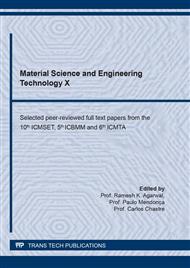p.331
p.338
p.345
p.352
p.358
p.367
p.377
p.383
p.389
Impact of Basic Parameters on Heat and Moisture Process Simulation of Bamboo Building Envelope in China (I): Meteorological Parameters
Abstract:
As a country of rich bamboo forest and large-scale bamboo processing industry, China is promoting the development of modified bamboo building materials and the bamboo construction systems. In the study on bamboo building envelope (BBE), as a hygroscopic construction, particular attention should be paid to the coupled heat and moisture (H&M) process. However, the parameters basis and the thermal design code in China could not yet support such calculation on coupled H&M process of BBE. In order to clarify the impact of meteorological parameters on the H&M process of BBE, the study prepares 24 representative cities in China with climate data exported from the Meteonorm platform and 3 typical bamboos with complete material properties data tested through experiments, and then sets up comparison BBE model groups in the software WUFI Plus for annual H&M process simulation. Statistical analysis clarifies the correlation law between the H&M process of BBE and the meteorological parameters. The study highlights the importance of hygric meteorological data for the application of BBE.
Info:
Periodical:
Pages:
358-366
Citation:
Online since:
February 2022
Authors:
Price:
Сopyright:
© 2022 Trans Tech Publications Ltd. All Rights Reserved
Share:
Citation:


